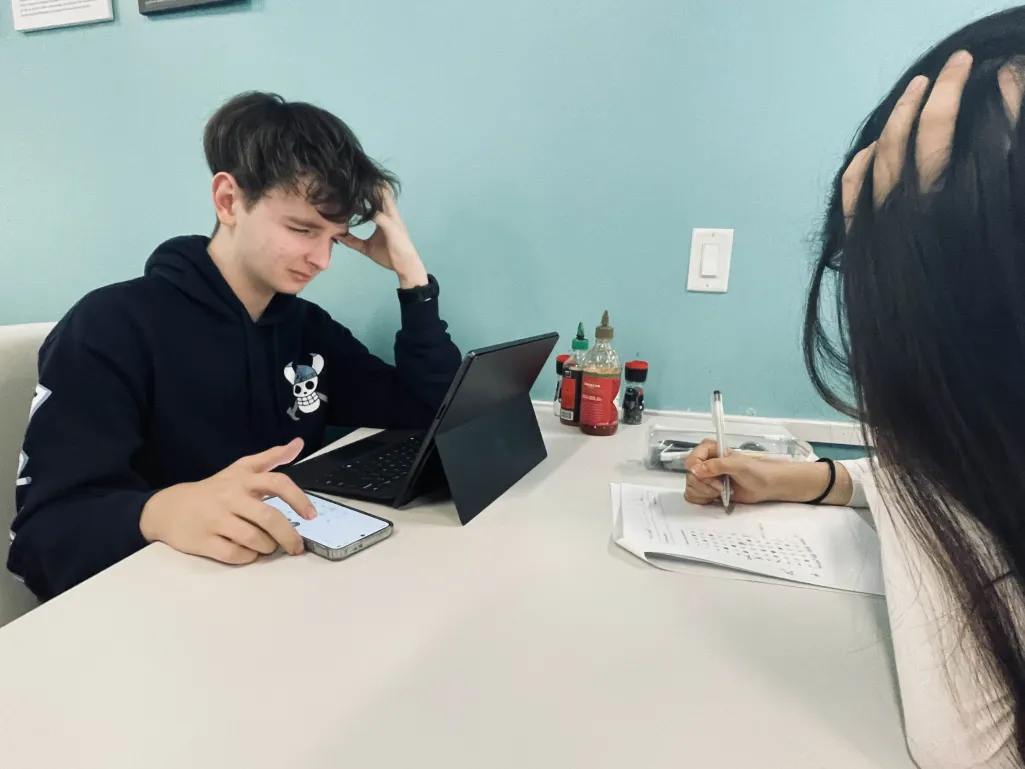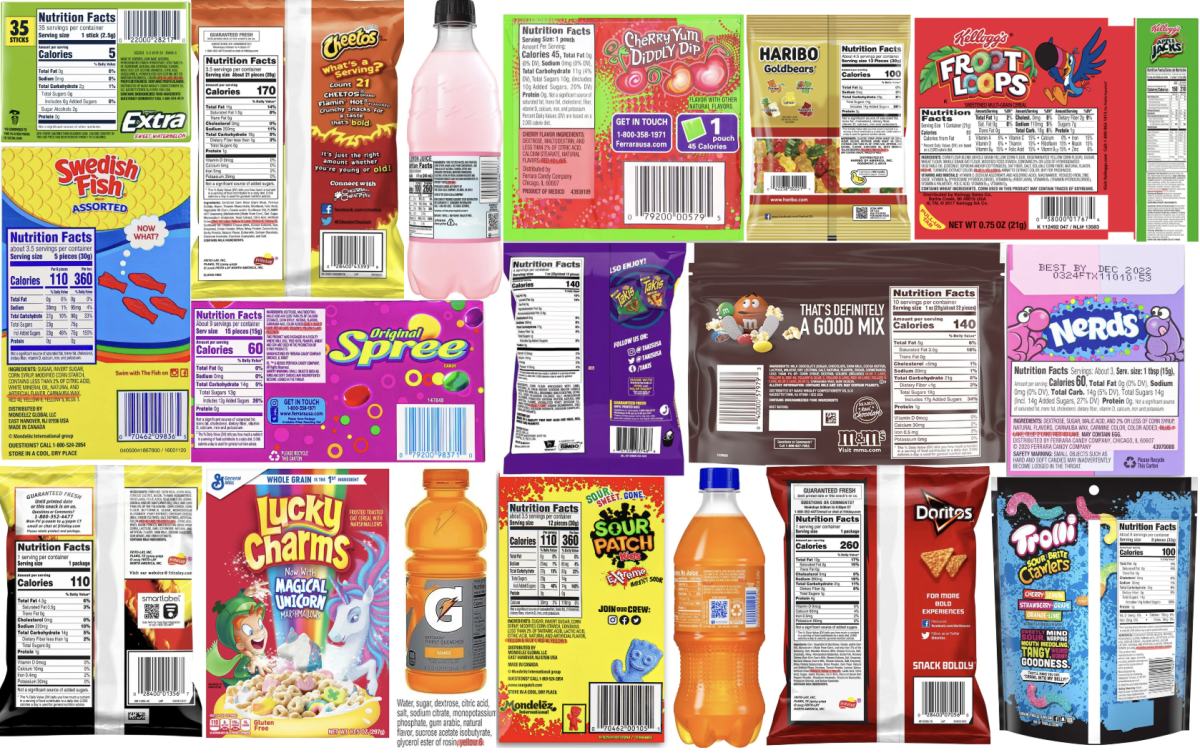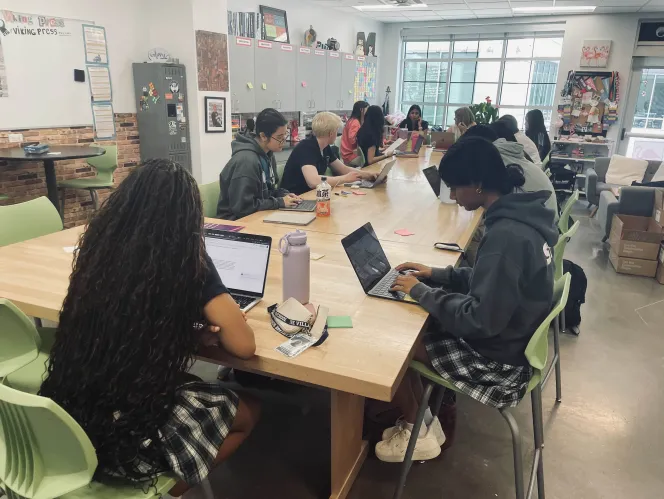In 2024, it’s common to walk into a Sephora, Urban Outfitters, or Lululemon and find children aged 10-12 running around buying every Drunk Elephant cream or Summer Fridays lip gloss in sight. If you asked anyone above the age of 15, you’d get an eye roll and a laugh – because why are the younger generations maturing so quickly? And why is it that if you put a 17-year-old and an 11-year-old next to each other, you have to do a double take to tell the difference? Social Media plays a large role in this because once brands get a hold of middle schoolers with their parent’s credit card, they become unstoppable, targeting a whole new demographic. It’s common sense that if a product gains a lot of publicity on TikTok or Instagram, viewers are going to be more inclined to buy it, and with the constant need middle schoolers have to “fit in” and stay up with trends, bright, “preppy”, and trendy brands have these pre-teens on a leash.
A large portion of TikTok “viral” videos are “get ready with me” style videos showing girls getting ready for the day and telling stories, while also talking about the products they are using. These videos originally started with girls in university or high school, showing their multistep skincare or makeup routines that accommodate them, using products that are fit for 16-22-year-olds. Products like retinol, caffeine, niacinamide, and AHA BHA solution are recommended for late teens to consumers in their 20s, not for developing skin cells in young girls. “Experts say these ingredients harm their skin’s natural barrier and could lead to problems later in life,” said Netmums, an online parenting blog that often interviews experts. These ingredients can cause rashes, irritation, and not only physical harm but also give these young girls a predatory sense of themselves, raising a generation of Sephora gremlins. So if these skincare products are so dangerous for young children, why are they still being marketed to a younger demographic that fiends for the “preppy” aesthetic? And even more so, why aren’t people informed about the effects? The media is just a colorful filter on reality, and showing all these “aesthetic” girls doing their skincare routines just influences younger girls to do the same so they seem “cooler” and “more mature.” Some brands like BYOMA, which are genuinely targeted for tweens, still have the colorful appeal and look nice on your shelf, but they aren’t what everyone is using, so what’s the point of buying them?
This overly saturated marketing of the aesthetic that tweens dream to have has caused “early maturity”, a term coined for all the 10-year-olds that show up to their fifth-grade classrooms with a fresh set of nails and about 80 dollars on their faces at all times. All these young girls have access to a great thing – social media. However with all the harms everyone talks about, like bullying, exposure to inappropriate content, etc., no one talks about how they are exposed to content of people almost ten years older than them, and using that as a standard for beauty and lifestyle. “I think that watching the younger generation take influence from social media and the idea of wanting to be like their older siblings makes them want to act more grown up,” says sophomore at The Village School Emma Iversen. This causes a domino effect of changing how tweens talk and act because of what they see online. Even at our very own school, there are many students that you wouldn’t be able to tell the difference between maturity levels and appearance if you just crossed the street from the high school to the middle school. All these young girls are basing their entire personalities on people who have lived more, done more, and overall matured more than them. And it’s not necessarily that these 10-12-year-olds have matured at an early age, it’s that they act like they have.
The overwhelming need to fit into societal trends and standards has started stemming into a younger age group. As our children grow up with many expectations that are meant to challenge teens and young adults, they carry on pressures to fit in as they grow. It’s normal for children to have something they want to be when they’re older, or someone to look up to, however with social media in the equation – even more influences cloud tweens’ minds and make them more susceptible to overconsumption and early maturity. Product marketing has advanced a lot in the past few years, and with the new marketing outreach to younger girls – especially on social media, brands get their products sold and money made, but at what cost?
References
Lovell, J. (2024, March 19). Inside the “harmful” tween skincare trend: Is your child damaging their skin? Netmums. https://www.netmums.com/child/inside-the-harmful-tween-skincare-trend#:~:text=Skincare%20experts%20have%20told%20Netmums,to%20problems%20later%20in%20life.








